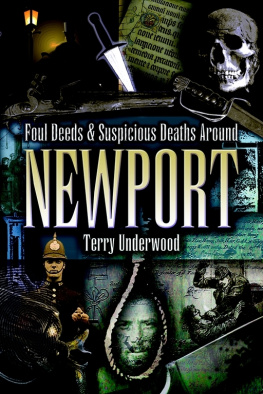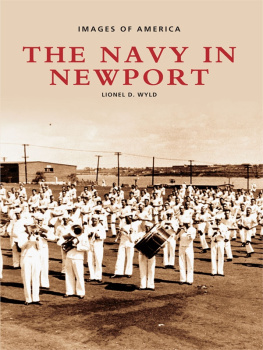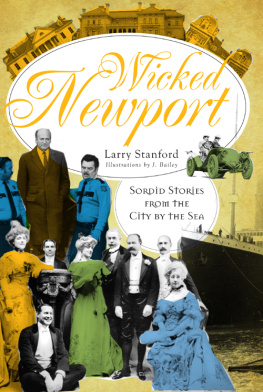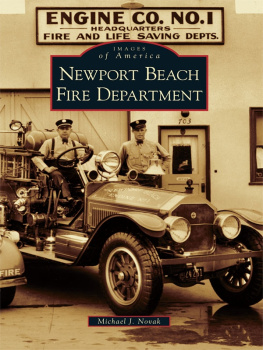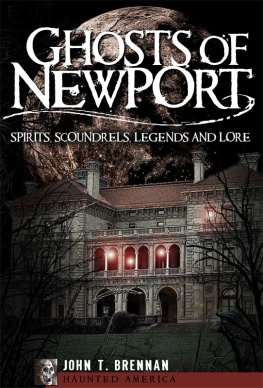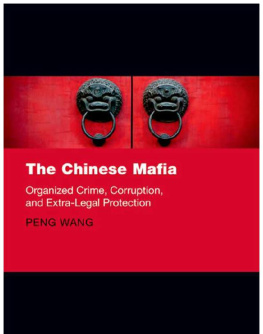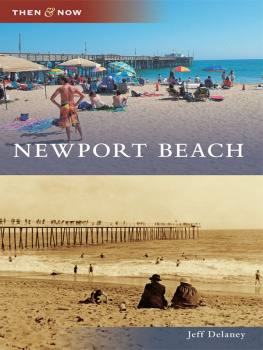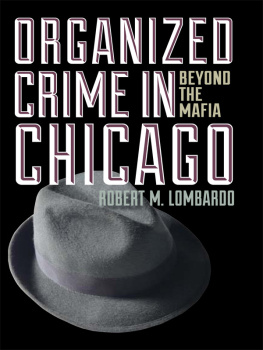Published by The History Press
Charleston, SC 29403
www.historypress.net
Copyright 2008 by Dr. Thomas Barker, Dr. Gary Potter and Jenna Meglen
All rights reserved
All images are courtesy of the Kenton County Public Library.
First published 2008
Second printing 2009
Third printing 2009
e-book edition 2013
Manufactured in the United States
ISBN 978.1.62584.117.9
Library of Congress Cataloging-in-Publication Data
Potter, Gary W.
Wicked Newport : Kentuckys sin city / Gary Potter and Thomas Barker.
p. cm.
Includes bibliographical references.
print edition ISBN 978-1-59629-549-0
1. Crime--Kentucky--Newport--History--20th century. 2. Corruption--Kentucky--Newport--History--20th century. 3. Organized crime--Kentucky--Newport--History--20th century. 4. Criminal justice, Administration of--Newport--History--20th century. 5. Social problems--Newport--History--20th century. 6. Newport (Ky.)--History--20th century. 7. Newport (Ky.)--Social conditions--20th century. 8. Criminals--Kentucky--Newport--Biography. 9. Newport (Ky.)--Biography. I. Barker, Thomas. II. Title.
HV6452.K4P68 2008
364.1060976934--dc22
2008037357
Notice: The information in this book is true and complete to the best of our knowledge. It is offered without guarantee on the part of the author or The History Press. The author and The History Press disclaim all liability in connection with the use of this book.
All rights reserved. No part of this book may be reproduced or transmitted in any form whatsoever without prior written permission from the publisher except in the case of brief quotations embodied in critical articles and reviews.
INTRODUCTION
Newport, Kentucky, lies to the south of Cincinnati, across the Ohio River, and to the east of Covington, Kentucky, across the Licking River. It was incorporated in 1795 by James Taylor, the brother of Hubbard Taylor, who actually platted out the site, named it and took up residence on it in 1775. The city was named for the British explorer Admiral Christopher Newport, who captained the first ship from England to Jamestown, Virginia. Newport was a small river town, whose potential for importance as a major river port had been eclipsed by Cincinnati. By 1830, Newport still had only 715 inhabitants. Newport was a town thoroughly isolated from its neighbors. There was no bridge across the Licking River to Covington until 1854 and no bridge across the Ohio River to Cincinnati until the Civil War. Newports economic identity would not become established until the late 1800s, when a large brewery and a large steel mill began operations in the town.
Newport would, no doubt, have been just another of the quaint, quiet, sleepy towns on the south shore of the Ohio River to the east of Louisville if it had not been for organized crime. Individuals and groups operating in the hidden economy of the United States would give Newport a distinctive identity for the entire twentieth century. Newport would become a legendary city in the history of American organized crime. In fact, Newport would share a designation as an open-city with only a handful of other towns, such as Hot Springs, Arkansas; Saratoga Springs, New York; Galveston, Texas; Hallendale, Florida; Phenix City, Alabama; and Biloxi, Mississippi. Open cities were communities in which politics, economics and crime became so enmeshed that separating one from the other was impossible. They were cities where organized crime became the dominant influence, an influence that persisted for decades. Of all the nations open cities, Newport had the longest run of unfettered criminal capitalism. In fact, Newport would become the earliest prototype of wide-open gambling later emulated in Las Vegas. Newports importance as an organized crime entrept is what put the city on the map.
But why Newport, Kentucky? What was it about this town and this configuration of politics and economics that made it so attractive to criminal syndicates? Reporter Hank Messick attributes Newports uniqueness to two factors. First, he claims that Newport was geographically isolated from the rest of Kentucky by bad roads and hilly terrain, requiring that it be both economically and politically autonomous. Second, he attributes Newports uniqueness to cultural conflicts between German and Irish Catholic immigrants and anti-immigrant, Protestant, Know-Nothing elements in Kentucky. Messick argues that this rift in the local population doomed any common political purpose or initiative for most of the twentieth century.
There is much truth to Messicks observations. Certainly, Newport was isolated, even from its closest neighbors. The absence of bridges to Cincinnati and Covington for the first sixty years of Newports existence clearly stunted its economic growth and allowed Cincinnati to develop as the primary river port in the area. Newports distance from Lexington, Louisville and Frankfort, and the difficulty of travel, certainly separated it from the major centers of social, political and economic life in Kentucky, as well as making it difficult, and politically unrewarding, for governors to interfere in Newports life, both legal and illegal.
Anti-immigrant bias was also well developed in Kentucky and in Cincinnati. In the 1840s, Newports population swelled to six thousand people as a result of an influx of Irish and German immigrants. In the 1880s, a second wave of German immigration occurred. There is no denying that anti-immigrant feelings ran high in Kentucky in the mid-1800s. There was a large and active, although short-lived, Know-Nothing party preaching anti-immigrant politics, and there were acts of considerable violence, such as Bloody Monday in Louisville in which twenty-two people were killed on August 6, 1855, in anti-Catholic riots. Certainly, there were traditional divisions and deep-seated animosities between Catholics and Protestants in Newport. How debilitating these were over time to political reform is a matter of conjecture. Messick believes that these divisions prevented a united front against organized crime until George Rattermans campaign for sheriff of Campbell County in the 1960s. Anti-German and anti-Irish prejudice did not enhance political cohesion.
But there were other influences on the development of Newport, as well. Every river town on the Ohio and Mississippi had its share of vice and river piracy during the nineteenth century. While river piracy in Kentucky was most common west of Louisville on the Ohio, some occurred in the Northern Kentucky area. Similarly, while Natchez, Vicksburg and New Orleans would become the primary vice districts for nineteenth-century river commerce, Newport also had its small share of vice in the form of faro games and hog pens (floating river brothels).
But the primary influences on Newports development as an open city can probably be identified in the economy and politics of the area. Despite the tendency to treat organized crime as an evil aberration in American history, the truth is far more complex. Organized crime, as demonstrated by every historical study on the subject ever conducted in the United States, is an organic, vital part of the communities in which it exists. Organized crime provides jobs, capital for reinvestment and a substantial injection of money into the local economy. It provides political contributions, under-the-table kickbacks, lucrative investment opportunities and election workers for political campaigns. It also provides an important social structure in communities that creates a buffer against the coarsest, most brazen criminal elements, who now are subject to social controls initiated by syndicates, and provides opportunities to make a living for a large number of very marginal people who might otherwise turn to more dangerous forms of predatory crime. Finally, and most importantly, organized crime exists only where there is demand for it. Organized crime does not create gamblers, drinkers, johns for the prostitution trade or illegal drugs and drug users. Organized crime simply establishes structures to meet that demand and profit from it. The relationship between organized crime and the communities in which it operates is highly symbiotic. The lesson of both historical and contemporary research on organized crime demonstrates universally that organized crime cannot exist where it is not wanted or tolerated. And in Newport, it was a welcomed guest.



